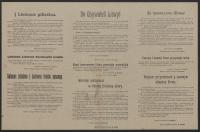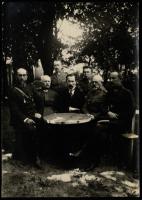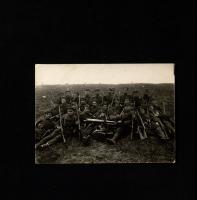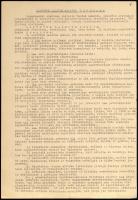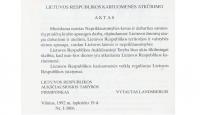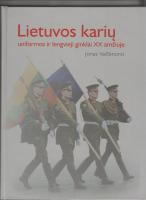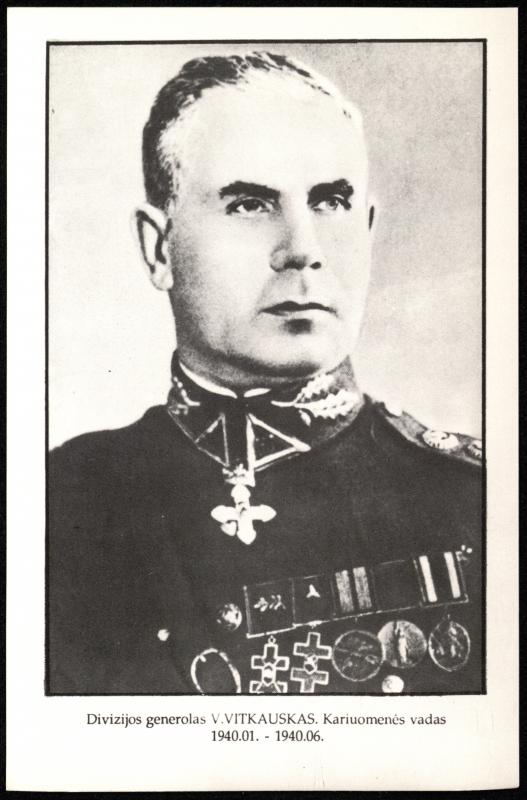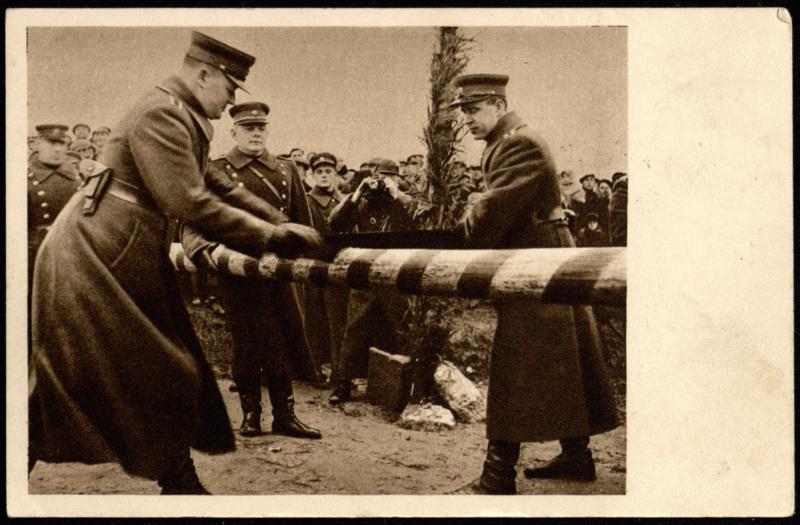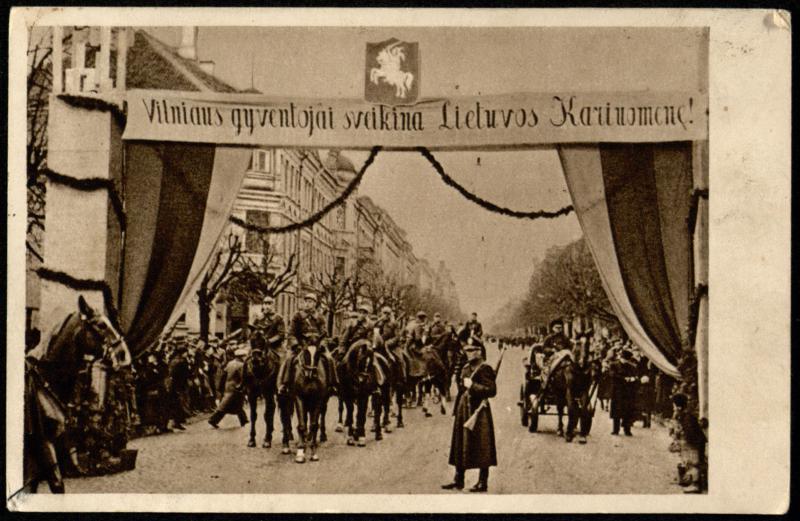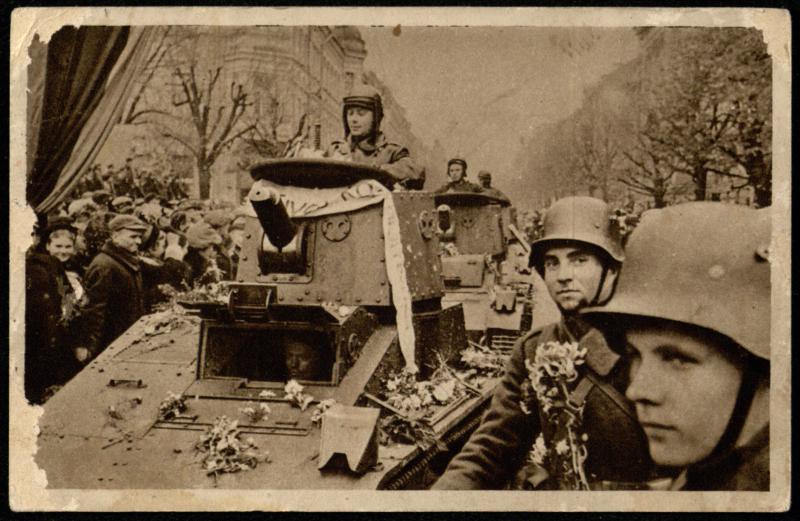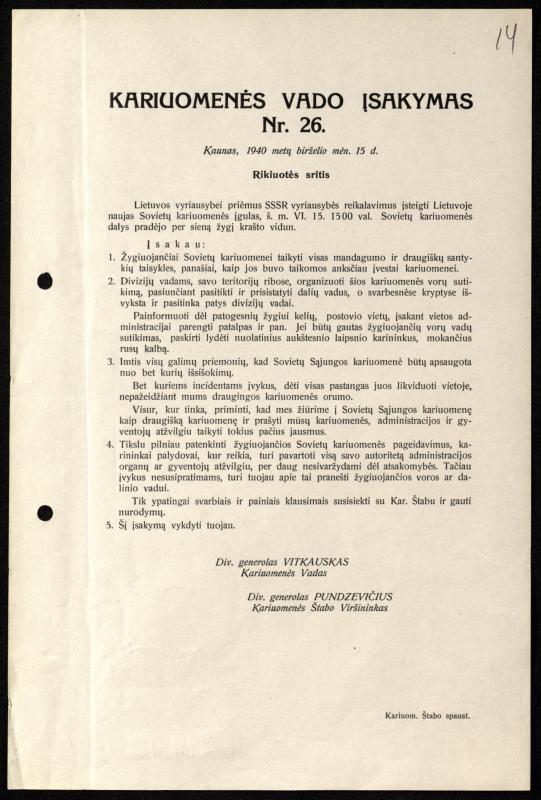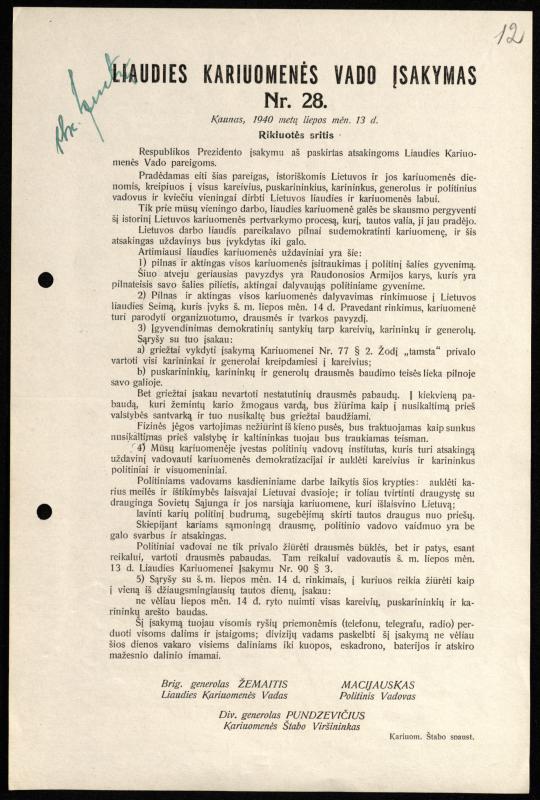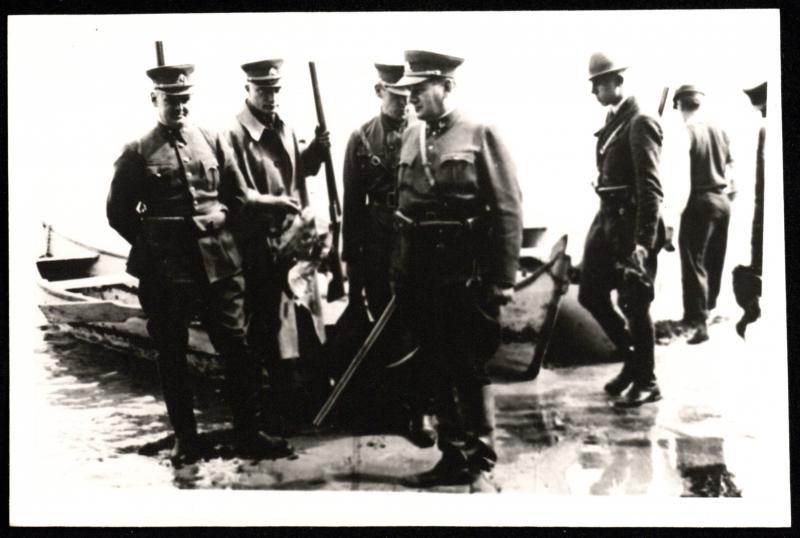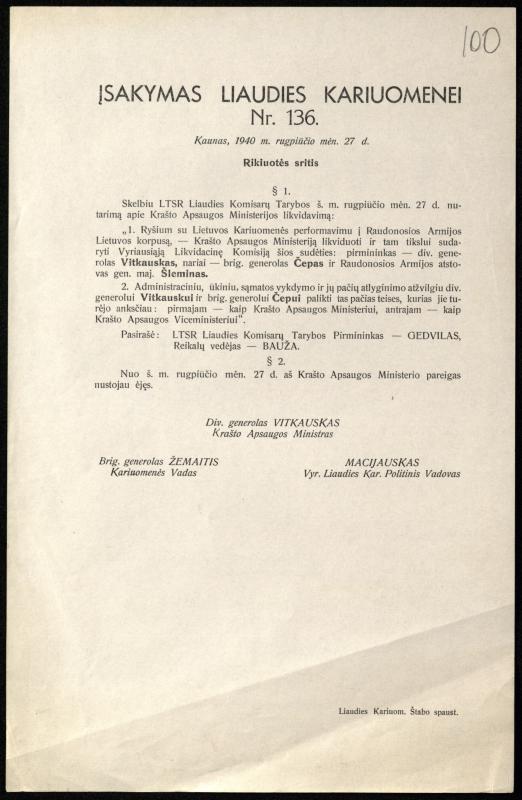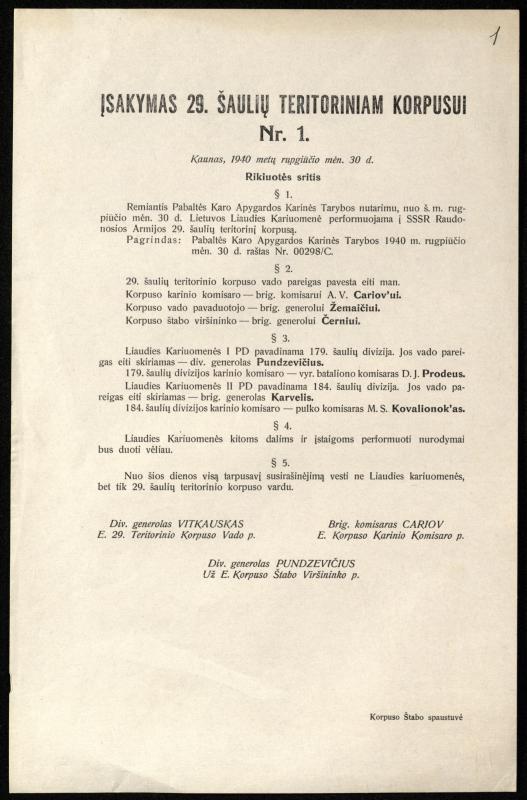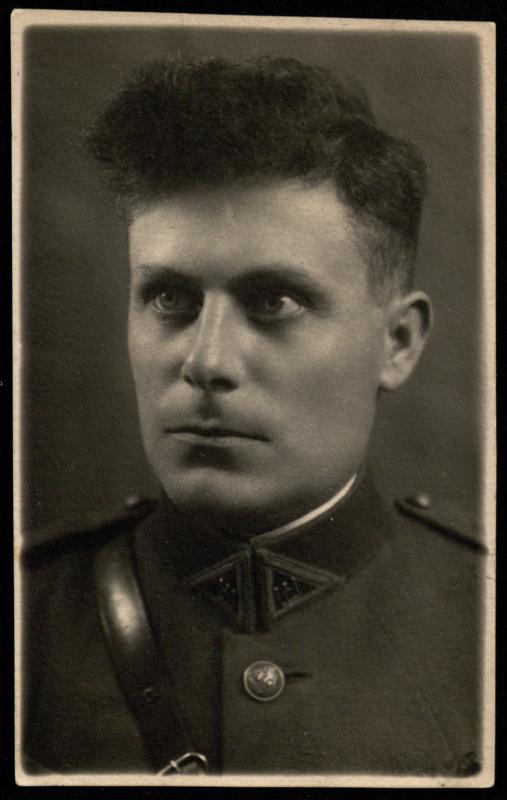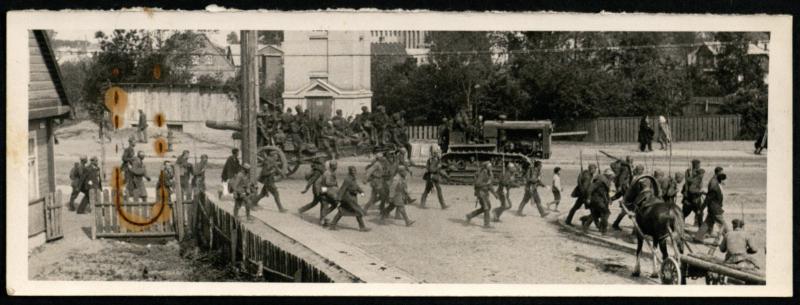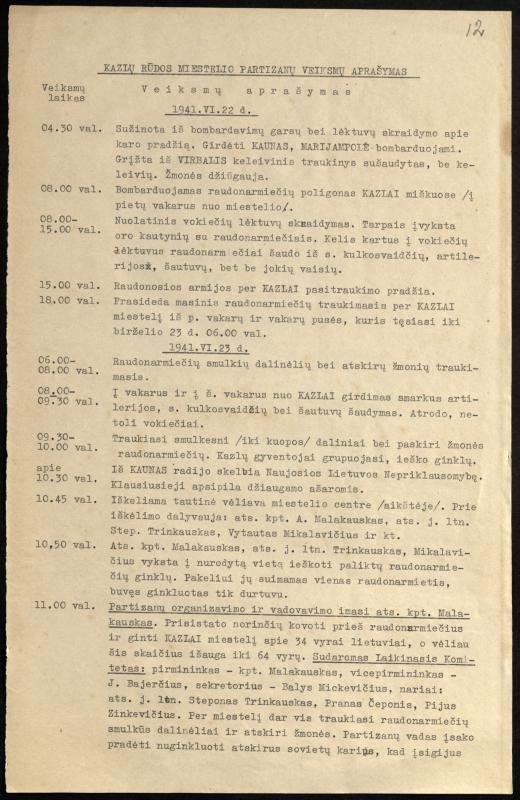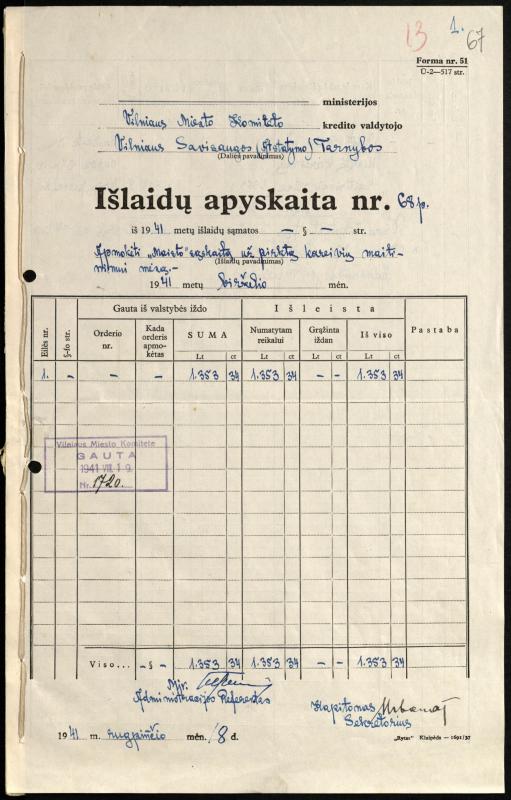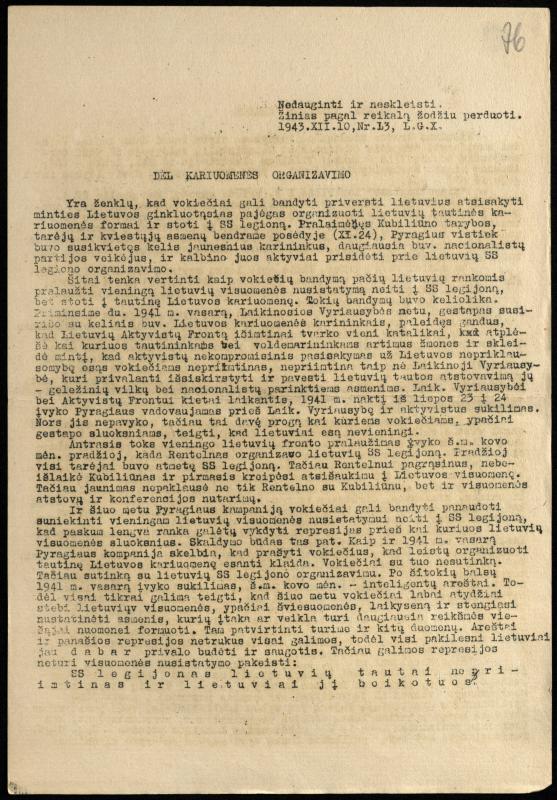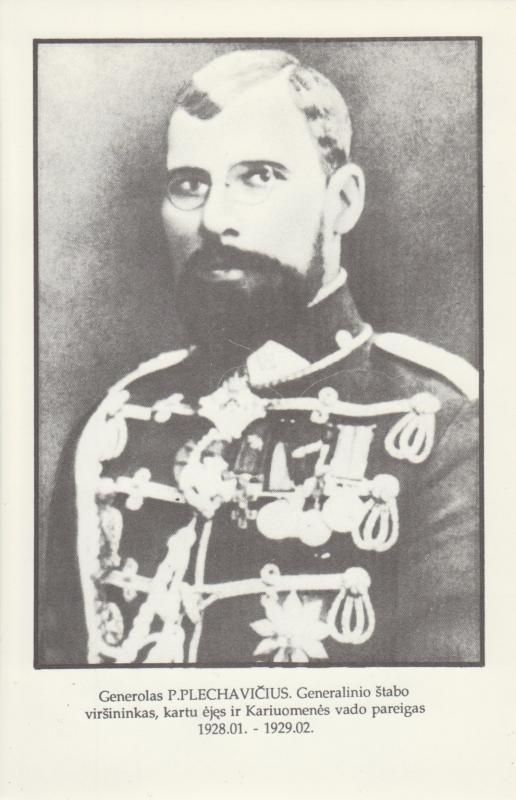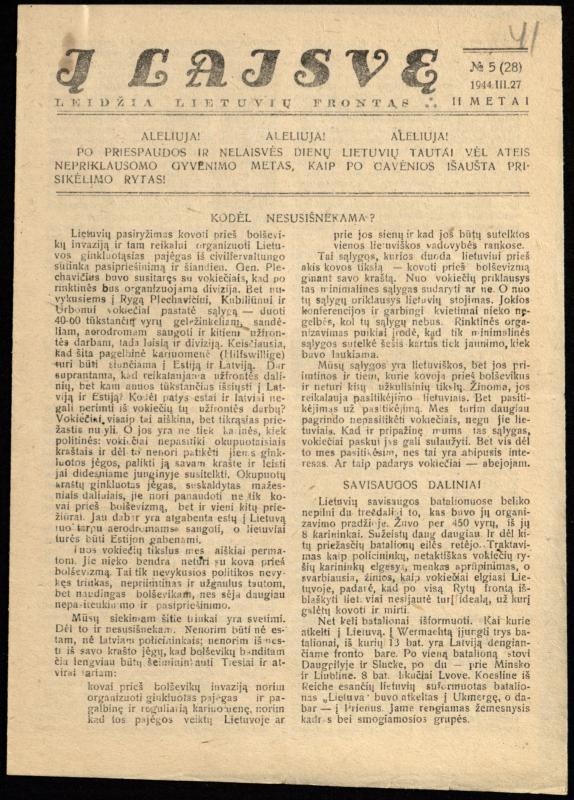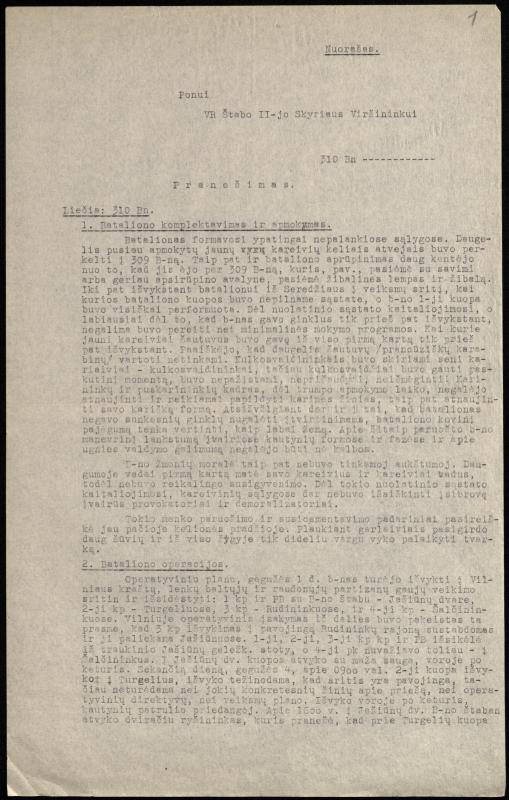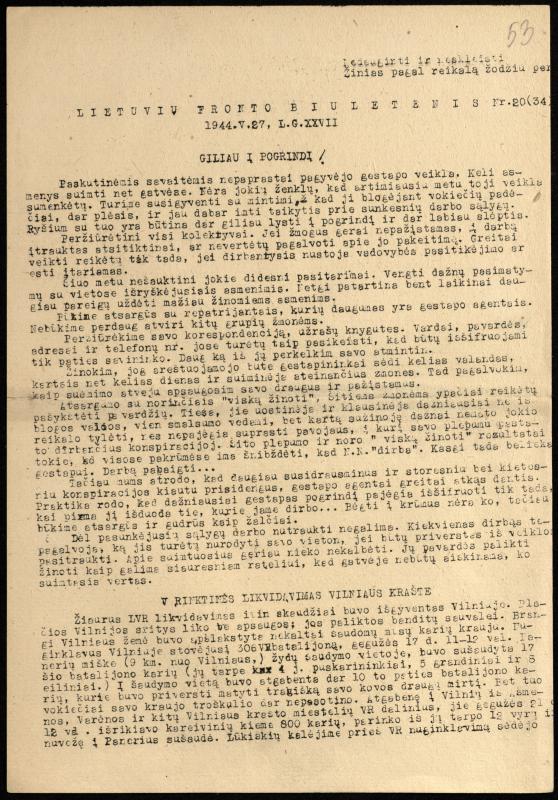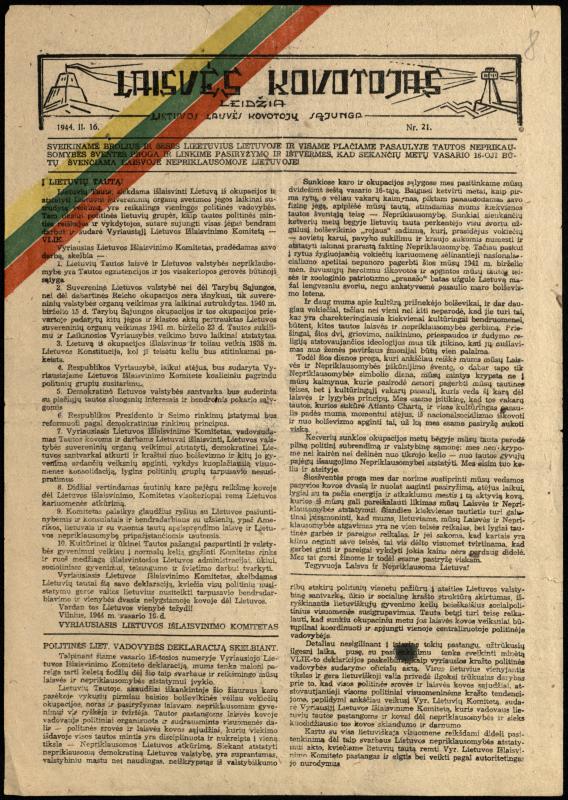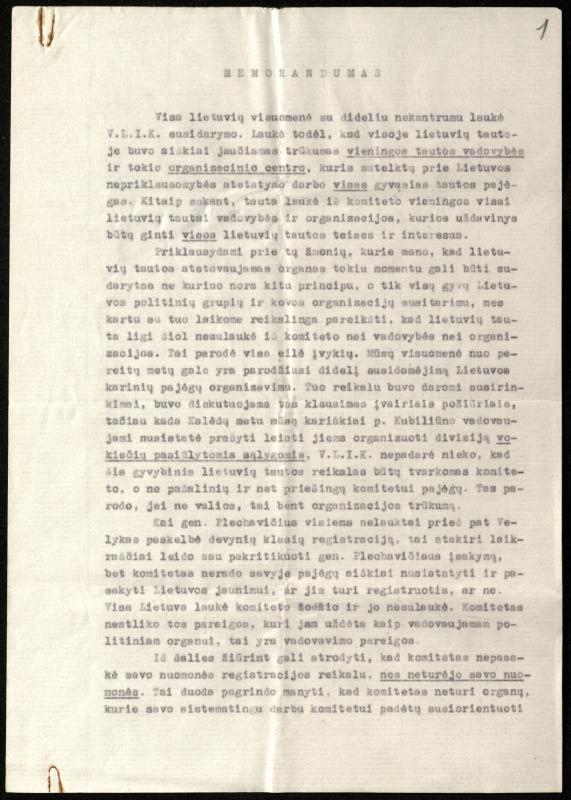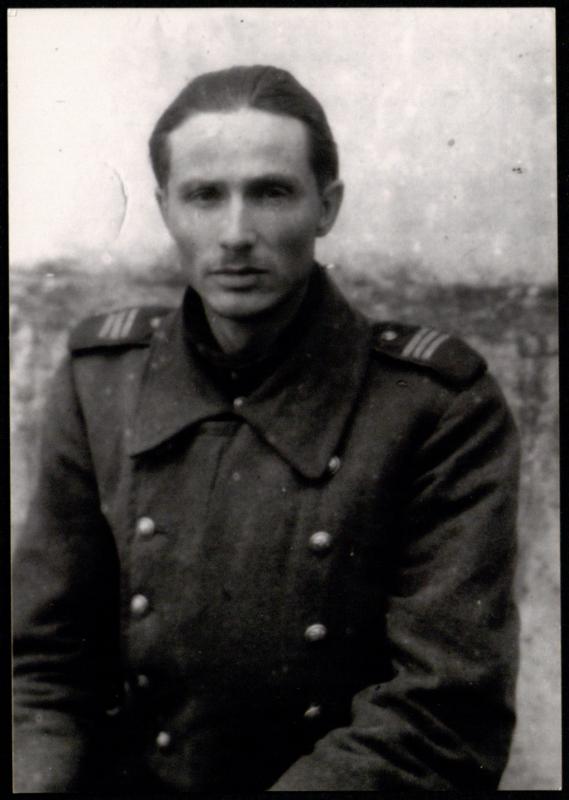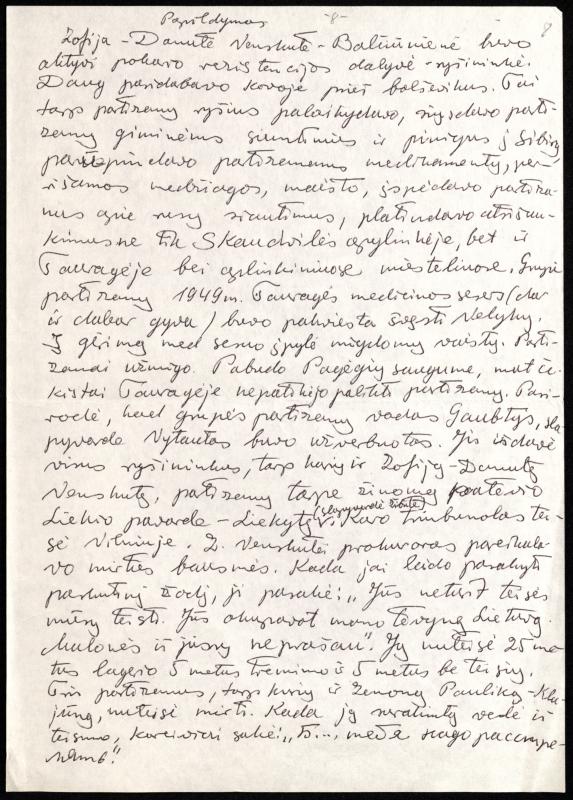Occupations
Soviet occupation
On September 28, 1939, Germany and the Soviet Union signed a treaty “On Friendship and Borders Between the USSR and Germany”, by which Lithuania was placed into the USSR’s sphere of influence. On October 10, the USSR forced the Government of Lithuania to sign “A treaty on the transfer to Vilnius and the Vilnius Region to the Republic of Lithuania and mutual assistance between Lithuania and the Soviet Union”. Lithuania regained Vilnius at a great cost – it was forced to admit Soviet military units within its borders. On October 12, the Vilnius detachment was formed with a view to marching on Vilnius. On October 28, the Lithuanian Army marched into the city. On November 15, 20 thousand Soviet soldiers invaded Lithuania. They were stationed in New Vilnia, Alytus, Prienai, and Gaižiūnai. Having falsely accused Lithuania of violating the treaty, the Soviet Union issued an ultimatum, which demanded to admit even larger numbers of Soviet troops into the territory of Lithuania. The government of Lithuania decided to accept the ultimatum and issued an order to the army not to resist the invasion. As the occupation of Lithuania began on June 15, the Lithuanian Army was forbidden to act. On July 2, on the orders of the so-called Lithuanian People’s Government headed by J. Paleckis, the Lithuanian Army was renamed to People’s Army. On July 12, Gen. V. Vitkauskas was dismissed from the position of Army Commander. He was replaced by a Moscow appointee, Gen. Maj. F. Baltušis-Žemaitis. As there was persistent resistance to the Soviet regime in all parts of the Army, the first wave of mass arrests of the military took place on the night July 23 to 24. On August 30, the Council of People’s Commissars of the LSSR passed a resolution on the reorganization of the People’s Army into the 29th Territorial Riflemen’s Corps of the Red Army. There was established a Special Department, which, together with NKVD, carried out surveillance of the officers and soldiers of the corps. On October 27, the liquidation of the Lithuanian Army was completed. In order to suppress the resistance among the military, the Soviets resorted to repressions. A large number of soldiers defected, many of them later joined the Lithuanian Activist Front.
Self-Defense, Territorial Defense Force.
Self-Defense units. When the war between Germany and the Soviet Union started on June 22, 1941, the Lithuanians set up a Provisional Government of Lithuania with a view to restoring the independent Lithuanian state. There started an uprising against the Soviet occupants. The 29th Territorial Riflemen’s Corps also engaged in rebellious actions. About eight thousand Lithuanian soldiers succeeded in defending themselves and staying in Lithuania. On June 24, the Germans agreed that a battalion be formed from Lithuanian soldiers staying at the Varėna training ground, in order to defend the Vilnius-Varėna railway section. About five thousand men from the former 29th Territorial Riflemen’s Corps gathered in Vilnius. The Provisional Government encouraged them to form an army for the defense of the country. New army headquarters were established in Vilnius. However, on July 26, the German commandant of Vilnius took over all the Lithuanian military units, which were then organized into Lithuanian Self-Defense Units.
Lithuanian Territorial Defense Force. On November 23-24, 1943, Lithuanian General Councillors (Lithuanian self-government officials under the German administration) and the People’s Council rejected the German proposal to organize the Lithuanian Army in the form of an SS legion. The German authorities then agreed that a Lithuanian division would suffice. On January 6, 1944, it was proposed that Brig. Gen. Povilas Plechavičius start forming Lithuanian military units. They were united into a formation called the Lithuanian Territorial Defense Force. Over 19 thousand men volunteered to join it. The first fully formed battalion, the 306th, was sent to Vilnius. However, the Germans did not hold to their promises. All the Lithuanian battalions had to be named “auxiliary police battalions” and wear the SS uniform. Upon receiving these instructions, Brig. Gen. Plechavičius ordered the battalions to obey his orders only. On his arrival to Kaunas on May 15, the Higher SS and Police Leader for Ostland issued an order for the arrest of the territorial force’ staff. Brig. Gen. Plechavičius and about 50 officers were imprisoned in the Salaspilis concentration camp. Four Lithuanian battalions were disarmed, about 50 soldiers shot, and some 3400 forcefully drafted into auxiliary service in Germany.
The Anti-Nazi resistance
Anti-Nazi resistance organizations such as the Lithuanian Front (LF), the Union of Lithuanian Freedom Fighters (LLKS) and the Lithuanian Liberation Army (LLA), began appearing in late 1941. They used the tactics of nonviolent resistance. While the Lithuanian Front attracted Christian Democrats, the Union of Lithuanian Freedom Fighters united people of the Nationalist Liberal persuasion. Starting from 1943, the Lithuanian Front published underground publications “Į laisvę” (“To Freedom”) and “Lietuvių fronto biuletenis” (“Bulletin of the Lithuanian Front”), and from 1943, the Union of Lithuanian Freedom Fighters published the newspaper “Laisvės kovotojas” (“Freedom Fighter”). Prior to the establishment of the unified Supreme Committee for the Liberation of Lithuania in 1943, there existed two resistance centers: the pro-Catholic National Council and the Supreme Committee of Lithuanians (LLKS, Social Democrats and Nationalists). As a result of the anti-Nazi resistance activities, the plans to form an SS legion failed, the mobilization was called off, the Lithuanian bureaucracy stood up to oppression, Lithuanian education was preserved, the nation was saved from even more brutal repressions, and was able to prepare for the Soviet reoccupation.
The partisan warfare
During the first stage of the partisan warfare (fall 1944 – summer 1946) the most active organization was the Lithuanian Liberation Army, which was later liquidated by the Soviets. At this time, the partisans were organized in large platoons and used military combat tactics. However, at the cost of heavy casualties, the freedom fighters realized that they would have to resort to partisan warfare. During the second stage (summer 1946 – late 1948) it became necessary to establish the center of the partisan movement. After initial setbacks, there was formed a unified freedom fight movement organization. The commander of the Western Lithuania (Sea) partisan region, Jonas Žemaitis-Vytautas, became its leader. In its third stage (late 1948 – summer 1953), the partisan warfare decreased in scale and intensity. On February 2-22, 1949, the leaders of the Lithuanian partisan movement met in the village of Minaičiai (near Radviliškis). The anti-Soviet resistance movement was called the Lithuanian Freedom Fight Movement. A declaration signed by the partisan leaders on February 16 stated that a parliamentary republic should be restored in Lithuania. The organized partisan resistance came to an end with the arrest of Žemaitis in summer 1952.

